Fixing the Cracks in Uganda’s Advertising Industry: Saladin’s Rommel Jasi on Standards, Ethics, and the Fight for Creative Value
Rommel is not just an agency executive—he is a builder of people, a steward of industry values, and a tireless advocate for collaboration over competition. His story is one of resilience, reinvention, and responsibility—exactly the kind of leadership the industry needs now.
This is Rommel Jasi, the Ugandan adman who believes legacy is not in campaigns alone—but in the systems, people, and values you leave behind.
To begin, let’s talk about your journey. How did you find your way into the industry? Was it a deliberate career choice, or did you land in it by chance? Take us back to where it all began.
Yes, I think for me, honestly, it wasn’t planned. After finishing college in India, I was determined to be an entrepreneur. I had studied BCom Finance and also earned a CCNA diploma, so I thought I’d go into networking—especially since the internet was just starting to pick up. I also considered riding on the franchise model: get a franchise and sell—those were some of the things we had learned.
So I pursued that for a few months. Then one day, I walked into the offices of Saladin—a Kenyan company that was recruiting at the time. I figured, why not? Let me go and see if I can expand my network. I had always felt like I was missing something. You know, when you start out as an entrepreneur without ever working for a corporate, you kind of feel like you’re lacking something.
So I walked in—not even knowing what job they were interviewing for. I just winged it. And yeah, I took my chance. A couple of days later, I got a call saying I could come in for a probationary period. And here I am, 18 years later.
Have you been with the same organization throughout, or have you worked across different ones along the way?
I’ve left and come back, so I’ve had the opportunity to work in different markets over the years. During my time with Saladin, there was a shift—Africa had become the new growth market, and many global network agencies were coming in, scouting for local partners or acquisition opportunities.
That’s how I ended up working with Dentsu, and later, I spent some time at Fireworks Advertising. After that, I got an opportunity to work with a firm called SaladinPHD (Pattison Horswell Durden), which is part of Omnicom, based in Kenya. I led the business there for five years.
Then COVID happened, and while I was home, I got a call asking me to return to Saladin—to come back and take care of the business. So for me, it’s been a full-circle journey. I went around, gained experience, and came back to where it all began.
Okay, and looking back at the time you joined—do you remember some of the early campaigns you worked on? What was your first impression of entering the advertising world? Because for me, I remember when I joined ZK Advertising around 2007, one of the things that struck me was this guy who joined around the same time as a copywriter—and I kept asking myself, “Copywriter? What does a copywriter do?” I thought it had something to do with photocopying! I never quite understood it at first.
So what was it like for you at the time you joined? What surprised or shocked you? And knowing what you know now, how would you describe the state of the industry back then?
Alright, so when I joined the industry, honestly, I didn’t even know it existed in the way I later came to understand it. My idea of advertising was very basic—if you wanted an advert, you went straight to a media house. That’s how I saw it: you go to a radio or TV station, they produce the ad for you, and then they run it.
I had no idea there was this intricate value chain behind the scenes—strategists, copywriters, art directors—this whole ecosystem driving what ends up on air or in print. I came to learn that media houses are actually just the tail end of a much bigger machine.
My first exposure to something close to this field was back in India, during the rise of the BPO industry. I had a friend working with Accenture—a professional services firm headquartered in Dublin, Ireland—and she introduced me to that world. So when I eventually joined an agency, I was thinking of it through a business process outsourcing lens: a client outsources part of their marketing function, and you step in to handle it. That was my frame of mind coming in.
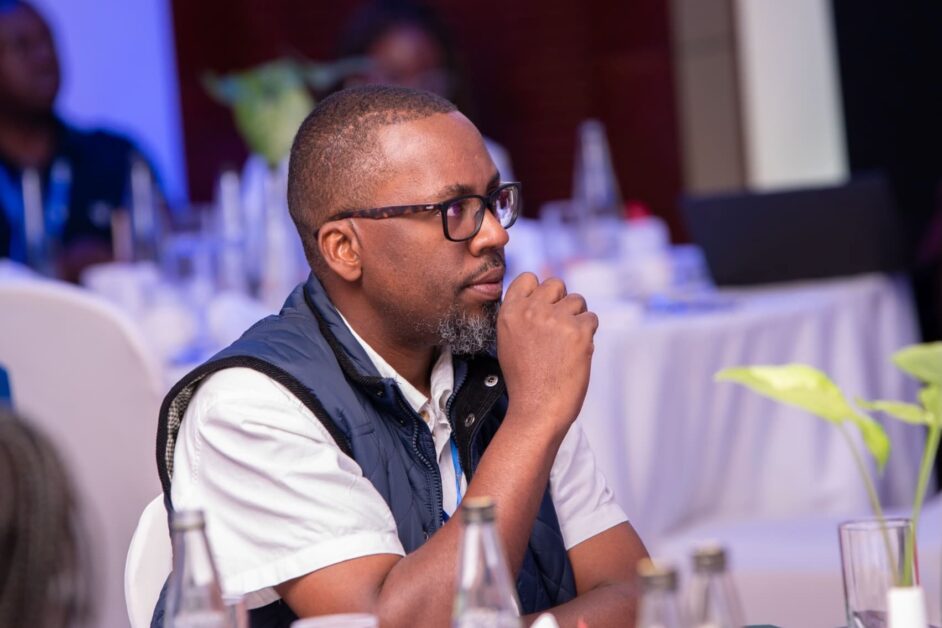
Then I began to meet people who would shape my path. I reconnected with Brian Buyungo—we were in India together—he was a designer and creative director. I later met Timothy Ondeng, who was with ZK, a major agency at the time. I also had the chance to interface with the late Thomas Walusimbi—an incredible guy. All these individuals went on to start their own agencies and create powerful African brands.
As I settled in, I came across Lenny Nganga—one of the best strategists and planners on the continent. He had worked across some of the biggest brands in Africa and shared very inspirational stories, especially when he came to support us on the KCB account. He really helped me understand media strategy and buying.
There were others too—George Wanjo, who had run ZK in Tanzania and worked with Saatchi, and Bujo, a meticulous copywriter who absolutely hated typos. If you handed him a document with errors, you could literally see the anger in his eyes.
That was the kind of breed I was introduced to—passionate, precise, deeply committed agency people. And I was lucky to fall into their hands.
Let’s focus a bit on the client side. When you first joined the industry, how did clients view the role and value of agencies? And how has that perspective evolved over time—say from then, to the midpoint of your journey, and now? Do clients today still see agencies as strategic partners, or has that relationship shifted? Would you say their appreciation for agency work has improved, declined, or become more transactional over the years?
That’s a good question. I think agencies are really struggling now. We hit a plateau—maybe about seven years ago—back when we were still able to charge decent retainers, before our work became commoditized.
That shift happened largely because of a few bad players among us. When agencies overcompete and forget that we’re essentially children of the same mother, we end up tearing each other down. In the last 18 years, I’ve watched agency fees steadily decline.
Why? Because clients quickly learned they could pit us against one another. You go into a pitch—there are no guidelines, no industry standards. You present your ideas for free, and then procurement tells you: “We got a better rate from the other guys. Can you go lower?” And so we keep undercutting ourselves until there’s no value left.
We’ve cheapened our product and, in the process, lost the respect and value once attached to what we do.
I remember a pitch we did in Kenya for a major banking institution. It came down to just us and the incumbent. We had inside information on what retainer they were charging, so we priced slightly lower. But then the incumbent agency came back and said, “We’ll do it for free.”
And if you look at that agency now—it’s a shell of its former self. They fired their key people, laid off most of their staff, and lost major clients. Their board isn’t what it used to be, and they’re a listed agency, so you can see it in their numbers—they’ve been posting losses year after year.
All of this stems from those unsustainable practices. If they had played fair—if they had helped uphold industry standards—we might all still be thriving. But over the last 18 years, it’s mostly been a steady decline.
What about the quality and caliber of people in the industry today? I imagine that when margins are tight, it inevitably affects many other areas—including talent. Looking at the current talent pipeline coming into the industry, what’s your take? How would you describe the experience of attracting, retaining, and developing talent today—and what challenges are you seeing on that front?
Yeah, so talent—keeping good talent—is definitely a challenge, especially with the low retainers many agencies are working with. In the last few years, we’ve seen a rise in freelancers—young, talented creatives who’ve branched out to start their own companies.
The result? A lot of the work we see now isn’t standardized. You come across some really strange billboards and wonder, Was this done by an agency? Was it a direct client job? It just doesn’t meet the quality standards we used to hold ourselves to.
That’s one of the things I’ve been trying to address at UAA. We’re working to bring everyone back into the fold—to find a way to re-establish industry standards across disciplines, and to build a solid pipeline for new talent entering the sector.
That’s part of the thinking behind initiatives like the Silverback Awards. Some people think we’re just celebrating creativity—but that’s only part of it. We’re also collecting data, showcasing excellence, and reintroducing a quality benchmark for the kind of work that should be going out. It’s about restoring authenticity and passion for the craft.
We want practitioners in this industry to feel seen and valued for the work they do. That’s how we start reclaiming the old glory days—because right now, a lot of the work has been commoditized.
And with the rise of AI, it’s only going to get harder. We’re already seeing the traditional art of storytelling starting to fade. That’s a big concern.
Speaking of talent, I’ve spoken to about five or six other leaders in the industry, and one of the recurring frustrations they’ve raised is internal—specifically around managing younger people. I remember back when I worked in an agency, it was almost a given that at least once or twice a month, you’d have to sleep in the office—especially during pitch season. Working late was normal, and at some point, one of our biggest cost centers was actually feeding people who were pulling those late nights. And no one really asked for extra pay—it was just part of the culture. Do we still see that same kind of hunger or commitment among younger talent today? And how are you coping with that shift in mindset and expectations?
Yeah, I’d like to approach this from a leadership angle. I think one of the biggest differences is generational. The older millennial group—people like us—had what you might call thicker skin. We were thrown into the deep end, baptized by fire, and expected to figure things out. That was just how the system worked.
But younger people today, especially Gen Z, have a much lower tolerance for pain. You have to tap into something deeper to get the best out of them. I learned this while leading an agency in Kenya, where I worked with many young people. What I discovered is that recruitment can’t just be about skills—you have to understand what makes someone tick.
When hiring, it’s critical to ensure that the company’s vision aligns with the individual’s personal vision. Our young people have big dreams. They want to be CEOs in five years. They want your salary tomorrow. And that’s largely because of the filtered world they’ve inherited—a world we helped create. As advertisers and brand builders, we’ve helped shape a culture of instant gratification and consumerism.
So we need to take some responsibility for the expectations they now carry.
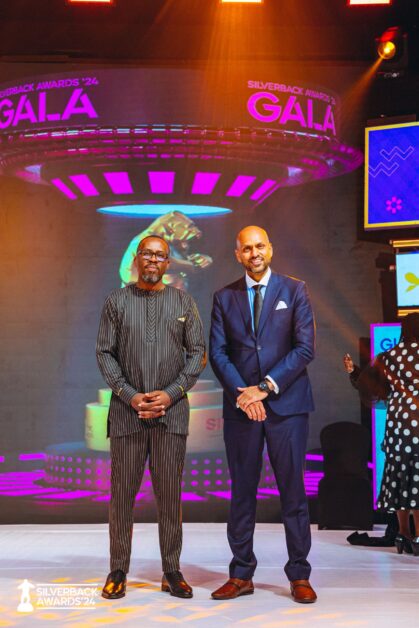
I remember when interviewing new hires in Kenya, I would ask questions like, “What are you passionate about? What do you do outside the 8 to 5?” Some would say, “I love makeup, I want to start my own brand,” or “I’m passionate about helping communities access clean water.” So I’d make sure we placed them on accounts that aligned with their passion—whether it was a beauty brand or a CSR-driven client.
Suddenly, it wasn’t about the paycheck anymore. It became about purpose. And when people work with purpose, they’ll go the extra mile. I had team members working overnight on projects, even sleeping at the office—not because they had to, but because they were passionate about what they were doing.
This is why I believe that every leader today needs to rethink how they hire and deploy young people. If passion meets competence, the results can be extraordinary. These same young people—who are willing to take to the streets for what they believe in—can also stay up all night building something meaningful for a brand they believe in.
At Saladin, we’ve reshaped our HR approach to be more people-focused. We’ve invested heavily in understanding what drives our team members—not just through typical team-building exercises, but by doing personality assessments like the Myers-Briggs, exploring their passions, identifying their strengths, and then placing them in roles where they can thrive.
We also invest in upskilling—training people not just for the tasks at hand, but for the dream they carry. And when you do that, you can pair people with the right kind of work and clients, and the results are far better.
That’s how we’ve managed it—long story short.
Yeah, and some of the other leaders I’ve spoken to have also emphasized the need for a mindset shift—recognizing that the younger generation is wired differently. As a leader, sometimes you have to take a step or two down to their level, understand what drives them, and then find ways to work together and move forward.
Now, shifting gears a bit—this one is more for the benefit of our readers and clients out there. I believe there are still many clients who should be using agency services but aren’t, simply because they don’t fully understand the value we bring to the table.
So, for the record: What exactly is the value of professional media buying, and why is it critical to business growth? And related to that—what separates a great media buyer from someone who’s just out there winging it? Why should a brand invest in a qualified media buyer or agency?
Thanks for that question. Let me start with the last part.
A good media buyer will place ads where the client asks. And we’ve seen many people in the market—clients and self-proclaimed media buyers—who simply call a media house and say, “Can I book space?” But a great media buyer knows where the audience actually is—and can prove it.
At its core, media buying is about investment. We are investing a client’s money, and one of the biggest challenges marketers face is justifying that investment to their CFOs or finance teams. A great media buyer helps make that case—by delivering measurable value.
What sets a great media buyer apart is their ability to think beyond platforms and placements. They understand audience behavior. They back every decision with data. And they negotiate value—not just cost. It’s not just about who can book cheaper airtime; it’s about who can deliver performance and efficiency.
Great media buyers are not order-takers. They’re not couriers delivering ad briefs. They are strategic advisors. They forecast outcomes, adjust in real-time, and report with clarity.
Think of it this way: when you’re building a house, a structural engineer gives you a bill of quantities—how much cement, sand, water, and steel you need in the right proportions. Media buying is no different. A great media buyer knows what proportions of reach, frequency, impressions, GRPs (Gross Rating Points), and cost-per-view are required to build an effective campaign.
And that’s just the short-term. Long-term, a great media buyer plays a key role in building brand equity—ensuring your brand is meaningful, distinctive, and salient. Those are the building blocks of what we call brand love—and they’re not easily achieved without strategic media planning.
So what’s the value of professional media buying? Strategic media planning connects the message, the audience, and the moment. It’s not just about buying airtime or space—it’s both a science and an art.
The art is the storytelling: copywriting, visuals, and creative direction. But the science is in the planning—reach, recency, continuity, and multichannel strategies. We now live in an age of multi-device consumption: phone, tablet, laptop, and TV—often all at once. A media buyer must ensure efficiency across all these touchpoints, following the consumer’s journey without over-investing.
It’s about pushing the right content, winning attention, and being contextually relevant.
We also help clients answer critical questions:
- How much money should I invest?
- How frequently should I communicate with my audience?
- At what weight or intensity?
Because beyond a certain point, repetition becomes wasteful. If I’ve already bought Colgate today, showing me nine more ads won’t make me buy it nine more times. That’s inefficient media investment.
So, in essence, a professional media buyer deeply understands the media landscape, knows the audience inside out, maps their journey across platforms, and delivers the right message at the right time. For example: if you’re trying to sell lunch, do you serve that message in the morning or closer to lunchtime? That level of nuance is what separates a good media buyer from a great one.
And that’s the real value we bring to the table.
Okay, and I’m speaking from some past agency experience here. One of the biggest challenges I observed was the lack of consistent and regular investment in research. As a result, many decisions were being made in the dark—and often, agencies were being pushed to act on instincts or assumptions they didn’t necessarily believe in.
From your experience, what are some of the biggest misconceptions clients have when it comes to media buying? What common mistakes are you seeing out there that clients need to be more aware of or cautious about?
Sure—let me highlight three major misconceptions I’ve seen among clients when it comes to media buying.
1. Short-termism
Many clients believe that investing in short-term tactical campaigns gives them the best value for their media spend. But research has consistently shown that while these campaigns may deliver short-term gains, they don’t contribute to long-term brand growth.
What really drives long-term results is consistency—and a strategic mix between functional and emotional advertising. Functional advertising focuses on the product—what it does, what it costs. Emotional advertising, on the other hand, tells stories that connect with people’s values and passions.
When you strike the right balance between the two, you build long-term brand equity: things like meaningfulness, salience, and distinctiveness. That’s what grows a brand—not just bursts of activity.
2. Being tone-deaf
Another misconception is what I call being “tone-deaf.” This is when a brand assumes that whatever message it puts out will be accepted—just because they created it. But that’s no longer how marketing works.
The consumer today has choices—and they’re in control. If you’re not listening to their needs, if you’re not co-creating content with them, or tapping into their passion points, then your message won’t land. You’ll miss the moment entirely.
In today’s world, you have to understand what drives purchasing behavior and speak to that. The days of one-directional messaging are over.
3. Failing to treat marketing as an investment
This is a big one. Many marketers still don’t view their advertising budget as a business investment. That’s a problem—because every shilling you spend needs to tie back to an outcome.
And even in markets where hard data is limited, there are ways to model and benchmark media impact. That’s something we’ve been doing increasingly with our clients—showing them how their spend contributes to the bottom line using available tools and methodologies.
At the Uganda Advertising Association (UAA), we’ve also been working on an initiative to address the broader data gap. Over the last 18 months, we’ve been collaborating with the National Association of Broadcasters (NAB), the Uganda Marketers Society, RUBA (Rural Broadcasters Association), and UMOA (Media Owners Association) to develop a single industry currency.
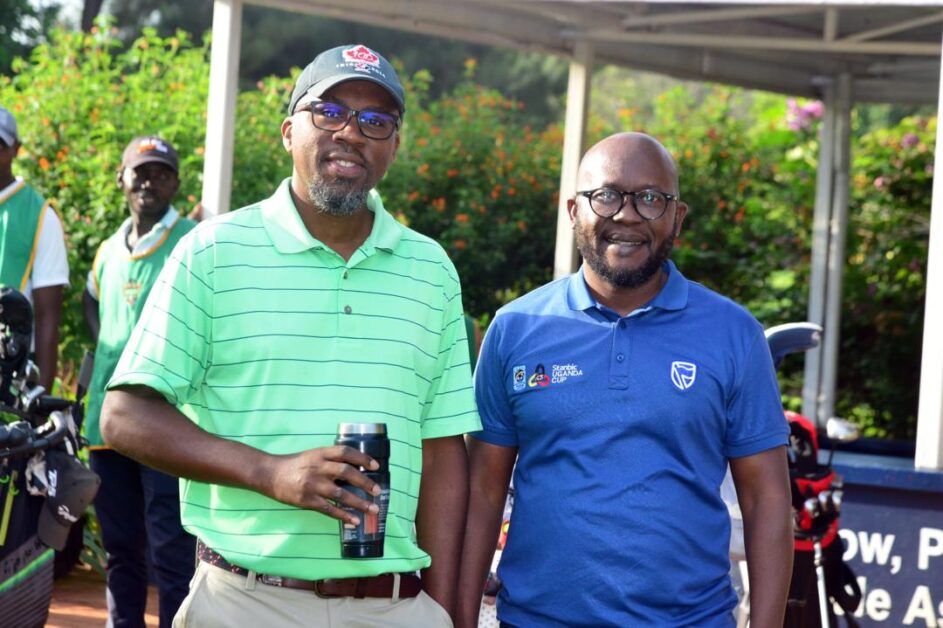
This currency is based on a sample of 10,000+ respondents, tracking media consumption habits and product interactions. The goal is to provide consistent, credible data that media owners can use to build rate cards based on actual ratings—not just operational costs.
And we’re already seeing the impact. One of my clients, for example, started with a UGX 5 billion annual budget. Through structured modeling, results tracking, and showing ROI clearly to their board, that budget has now grown to over UGX 20 billion in just three years.
Why? Because they can confidently say: We invested, we measured, and we delivered results.
That’s what builds trust. That’s what keeps budgets growing. But you can’t throw up your hands and say, “There’s no data—just give us money and we’ll see what happens.”
If you’re a marketer who loves data, who wants to be accountable, and who’s willing to partner closely with your agency, you’ll absolutely see the value that strategic media planning can bring.
You’ve been in the industry for about 19 years now—would you say there’s been a major shift in what works today compared to what worked back then? Or is it more or less the same game, just with a few new tools and perhaps different players? Has the essence of the work really changed?
The game has definitely changed—especially since around 2007 with the explosion of internet access. Things really started shifting when the undersea cable landed in Mombasa. From that point on, the role of media buying began evolving dramatically.
It’s no longer just about securing space on TV or radio. Today, media buyers are navigating a complex, fragmented ecosystem that includes digital platforms, influencers, and programmatic channels.
As a result, media owners now have to be data-savvy, platform-literate, and audience-obsessed. It’s not enough to buy generic media placements anymore. You have to actually build custom audiences for your clients.
Gone are the days when we all simply bought the same Facebook audiences. Now, you need to develop your own data sets, tailor strategies, and leverage platforms intelligently. With programmatic, media buying has become faster, more automated, and—importantly—more accountable. That’s one reason we’re seeing more and more budget shifting toward digital.
To give you some context: five years ago when I returned to this market, only about 5% of media budgets were being allocated to digital. Today, that figure is around 40%. That shift is shaking up traditional media—some advertisers are still wondering what’s happening, but the truth is: the cheese has moved.
Influencer marketing has also changed the game. Media buyers now have to think like talent managers—evaluating not just reach, but also engagement, content quality, and authenticity before recommending an influencer to a client.
At the same time, traditional channels haven’t disappeared. We now have over 280 radio stations and more than 60 local TV stations. Print, however, continues to struggle.
But all things considered, I believe this is the time when media buyers should truly be valued—and paid—for the strategic business impact they bring. The scope has expanded, and the stakes are higher. It’s no longer just buying airtime—it’s about delivering measurable outcomes.
Is there a working number out there—some sort of benchmark or ROI estimate—that shows the difference a professional media buyer can make?
I recall you mentioning a client who achieved a 20x return on their investment. Is that typical? And is there a way to quantify the gap between a brand that uses a strategic media buying approach versus one that doesn’t? What kind of ROI difference are we really talking about?
Yes, absolutely. There’s that old adage in marketing: “I know that 50% of my advertising works—I just don’t know which half.” If you’re not approaching media buying professionally, you’ll never know which part of your investment is delivering value and which part is wasted.
Working with a professional agency helps you bring both efficiency and effectiveness into your media investment. Otherwise, you’re likely to suffer from massive inefficiencies—and your CFO will struggle to see the value in what you’re doing. And when budgets get tight, marketing is often the first thing that gets cut, even though it’s one of the most critical parts of business growth.
If consumers aren’t aware of your product, they won’t buy it. It’s that simple—and there’s research to support that. Look at a brand like Coca-Cola. It’s over 200 years old, universally recognized. Who doesn’t know Coke? Yet they still spend billions annually to stay top-of-mind. Why? Because staying visible is what drives ongoing demand. They’ll even print your name on a bottle just to keep the conversation going.
That’s the power of marketing—and that’s why it matters.
And if you think about it more broadly, many of the world’s biggest economies are built on marketing. Take Hollywood, for instance—arguably one of the largest marketing machines in the U.S. It doesn’t just sell entertainment; it sells brands, it sells a country, it sells a lifestyle. That’s why so many people dream of moving to the U.S.—to New York, to “the land of opportunity”—until they get there and realize there’s poverty there too. But the dream was sold, and that’s what marketing does: it drives behavior, often irrational behavior.
If you treat marketing purely as a cost, you’ve already lost. Because marketing isn’t just about information—it’s about demand creation. It makes people want things they didn’t know they needed.
Take “breakfast,” for example. That entire segment was created by marketers. Growing up, many of us didn’t eat breakfast until after we’d worked in the garden—maybe around 10 or 11 a.m. But brands came in and redefined the narrative. Now, we associate mornings with Blue Band, cereal, and milk—because someone marketed it that way.
That’s the value of professional marketing and media buying. It creates demand. And if you miss that, your product—no matter how good—may never be bought.
Media, both within agencies and on the client side, tends to be the cost center where the largest budgets are spent. Because of this, it’s often at the heart of integrity and ethics concerns. Over time, we’ve heard credible reports of media buyers engaging in unethical practices—either being influenced or actively influencing decisions in ways that compromise value for the client.
In some documented cases, even internal client teams have been involved in fraudulent behavior, creating a system that’s difficult to navigate without strong values. As a leader, particularly one responsible for overseeing large media budgets, this environment demands a values-based approach.
From your experience, how have you dealt with these integrity challenges—both within agencies and on the client side? What lessons have you learned about maintaining ethical leadership in such a complex and temptation-filled ecosystem? And more importantly, are you seeing the situation getting better, worse, or just shifting in form?
Thank you—that’s a very important question. This speaks directly to the issue of ethical advertising, which is the bedrock of public trust. In Uganda, we’ve made some progress, particularly in sensitive sectors like health, finance, and education. More agencies and clients are beginning to ask the right questions: “Is this true?” “Is it respectful?” “Does it reflect our values?” We’re also seeing growing awareness around themes like ESG and DEI—diversity, equity, and inclusion.
That said, there’s still a long way to go. We urgently need stronger self-regulation in our industry, especially around truth in advertising, influencer transparency, and media transparency. Over the past few years, industry bodies have introduced ethics oversight structures, such as ethics officers within associations. I’ve personally been in conversations with the leadership of Uganda Marketers Society (UMS) and the Public Relations Association of Uganda (PRAU) about establishing a joint disciplinary council. The goal is to create a unified system that can hold both agencies and clients accountable when ethical lines are crossed.
We must also invest in shaping the next generation of advertisers—instilling in them a mindset that goes beyond just making the sale. They need to understand the broader cultural impact of their work and the long-term consequences on brand trust and reputation.
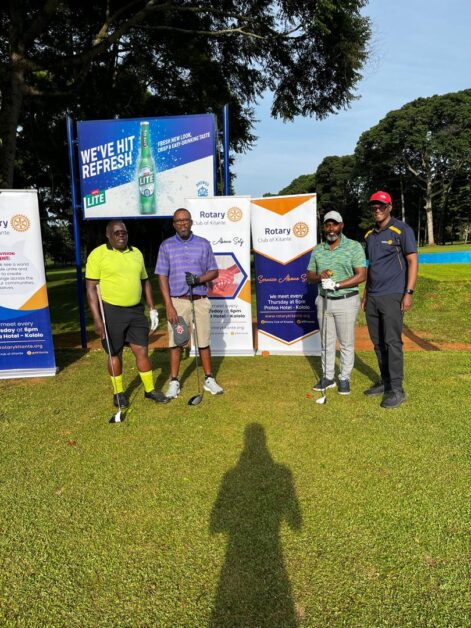
Ultimately, what we’re trying to build is not just a creative industry, but a credible one. But this issue extends beyond our sector—it’s embedded in the wider business and governance culture. We see it in procurement, in HR, even in how recruitment is handled across both public and private institutions, where nepotism and favoritism can undermine meritocracy.
So yes, the challenge is real. But the initiatives we’re working on—industry-wide ethical standards, stronger collaboration among professional bodies, and value-based leadership—are helping us move in the right direction.
Looking at the state of the industry today—and considering some of the changes we’ve discussed—what advice would you give to emerging creatives and young professionals entering or growing within this space? And on a more personal note, what excites you most about where the industry is headed—and conversely, what concerns or worries you about its current trajectory?
Absolutely. There’s been a clear shift from traditional to digital—and this hasn’t just called for new tools, it’s required a complete mindset transformation. For anyone entering the industry today, the biggest lesson is that learning never stops. You must invest continuously in building your digital capabilities—understanding platforms, reading analytics, interpreting data, and most importantly, creating content that truly resonates with digital audiences.
We’re no longer in an era where you could spend weeks and a big budget crafting a single glorified 30- or 60-second TV ad and expect it to do all the work. Today, you’re expected to produce multiple iterations, across multiple formats, in real time. That demands agility.
So my advice to emerging creatives is this: don’t box yourself into a single role. You can’t say, “I’m just a copywriter” or “I’m only an art director.” That level of rigidity doesn’t work anymore. You need to be multi-skilled, agile, and adaptive—because digital moves fast, and the industry evolves even faster.
Another critical piece is collaboration. One of our agency’s biggest strengths over the years—and what has kept us relevant—is our openness to collaborate. As a media-independent agency, we’ve worked with nearly every other major agency in the market: Fireworks, MetropolitanRepublic, Maad Mcann, Scanad, Zeus, Blue Flamingo—you name it. And I can tell you, our most successful campaigns have been the result of strong collaboration, not competition.
This is something I’m strongly advocating for within the Uganda Advertising Association (UAA). We can no longer afford to view each other solely as competitors, especially when the external threats—from global players, platforms, and consultancies—are far more significant. The future belongs to those who work together, pool resources, and build integrated solutions. That’s how we stay relevant. That’s how we thrive.
That’s well said on collaboration. From what I know, the agency world is a high-pressure environment—from top to bottom. If it’s not the tight deadlines, it’s shrinking budgets, increasing client demands, more stakeholders to align with, and now even external threats. As a leader navigating all this, how do you personally stay grounded? What are some of your go-to strategies or habits that help you manage the pressure, stay sane, and show up fully both at work and at home?
That’s a great question, and I’ll start by sharing a personal story. Over the last five years, I’ve undergone three brain surgeries—the most recent in January last year. The first two were in India at the onset of COVID in 2020, but they weren’t successful due to the location of the tumor. By God’s grace, the third surgery in Johannesburg was successful.
While there, I asked my doctor about the likely cause. He shared that his research linked many of these tumors to hormonal imbalances—often brought on by chronic stress. And that really hit home. In our industry, we operate in constant fight-or-flight mode. Stress hormones like adrenaline and cortisol spike regularly, and over time, this has consequences. Since then, I’ve become more intentional about how I lead and how we create healthier work environments.
Here’s what I’ve done both personally and institutionally to manage pressure and stay sane:
1. Redesigning the Agency Environment
- We’ve deliberately created a human-centered culture in our agency—where pressure doesn’t translate into burnout.
- One example: we’ve instituted “no-meeting Fridays” so the team has uninterrupted time to work, reflect, or just breathe.
- We’ve also added mental health support to our medical package so staff can access counseling and professional help when needed—because we recognize that people bring their whole selves to work, including challenges at home.
2. Empowering the Team
- I’ve learned to delegate effectively and build a strong team structure. I now lead through eight department heads—Finance, Data, Talent, Integrated Media, Creative, Digital, etc.
- My job is to empower them and ensure they do the same for their teams. I don’t micromanage—I lead through trust and accountability.
3. Prioritizing Wellness
- Personally, I’ve embraced golf as a form of therapy. My PA blocks off time for me to play each week—it’s how I unwind.
- I also insist that annual leave is mandatory for all staff. Burnout helps no one; people need time to rest and recharge.
4. Promoting Financial Literacy
- One of the most common stress triggers, especially among young professionals, is poor financial planning.
- We offer financial literacy sessions to help our staff make smart decisions with their income. We’ve seen too many in the industry earn well, only to have nothing to show for it years later. We want to break that cycle.
5. Creating an Inspiring Workspace
- We recently moved into a new office with a swimming pool, comfortable workspaces, and a homey atmosphere.
- The idea was simple: create a place people want to come to every day. And it’s working—we’re attracting great talent simply because of the culture and space we’ve cultivated.
Ultimately, leadership in our industry has to evolve. It’s not just about meeting deadlines—it’s about creating environments where people thrive, both professionally and personally. That’s the only sustainable way to lead in this high-pressure world.
That’s really insightful. As we begin to wrap up—looking back at your 19-year journey in this industry, I’m sure you’ve had the privilege of working on some remarkable, game-changing campaigns that helped shift brands and businesses in meaningful ways.
Could you briefly highlight a few of those standout moments or career milestones that you’re most proud of?
And then finally, when the story of Rommel Jasi is written—not the one from Germany, but our very own Rommel of Uganda—how would you love to be remembered? What legacy would you want to leave behind in this industry and beyond?
Yes, in these 18 years, I’ve had the privilege of working on a number of impactful campaigns and navigating complex client relationships. One of the earliest—and most memorable—accounts I handled was Western Union. It was what I often called a “monster account” because it had over 10 agent banks involved, each with their own agenda. Getting consensus was a nightmare. That experience taught me diplomacy and the importance of understanding boardroom politics—specifically, how to win decisions outside the boardroom before walking into it. Those early lessons have stayed with me throughout my career.
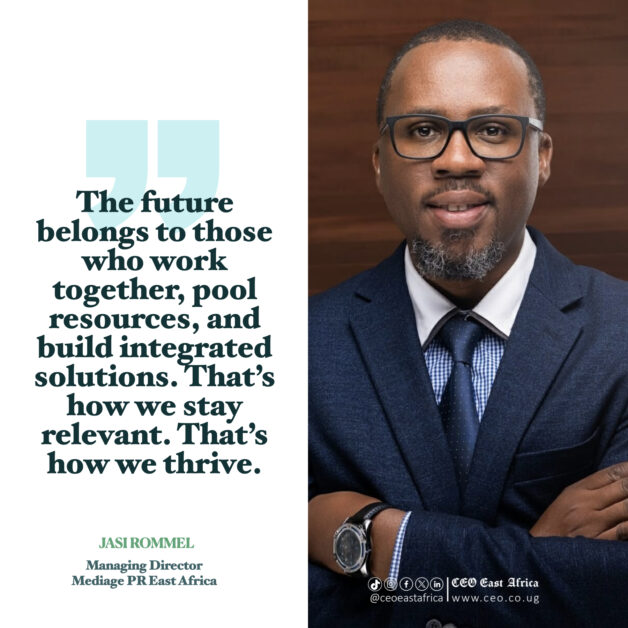
The agency world really prepares you for almost anything. I’ve handled past accounts like KCB, and later moved on to work across several functional campaigns—many focused purely on product and features. But one of the turning points in my career was when I got the opportunity to work on more emotionally driven, human-centered campaigns.
One standout experience was with GlaxoSmithKline (GSK), the makers of Panadol, Aquafresh, Sensodyne, and Calpol. We were given a platform themed “When strong pain goes, life begins.” That inspired us to create the Panadol Taffycampaign—celebrating people who go through great pain to bring joy and relief to others. One story featured a GSK employee raising a child with cerebral palsy. She worked a full-time job and then returned home for another full-time shift caring for her child. But her pain had a purpose—she created a blog to support other parents with similar challenges, especially in a society where such conditions are often hidden.
Another story featured a young man from the ghetto who regularly took underprivileged children to play football, walking over 15km each way, simply to expose them to a better path in life. That campaign deeply moved me, and it was an eye-opener in how emotional storytelling can sell even a product like painkillers.
We’ve also worked on powerful local campaigns—like OMO’s “Dirt is Good”, where the insight was less about washing power and more about giving children the freedom to play. We partnered with Uber to make it experiential, and it turned out brilliantly.
More recently, a collaborative campaign we did with Fireworks Advertising and The Collective—the Uganda Lemon and Ginger story—was a highlight. That campaign won major accolades and proved that great storytelling still wins. There’s also the Taska Marathon work and the Mountain Grand campaign—both rooted in real insight and emotional resonance, and both delivered tangible brand impact.
In all, I’ve been privileged to not just sell products but to tell stories that shift perceptions, move people, and actually grow brands. That’s what makes it all worthwhile.
When you eventually step away from the industry and finally take time to relax, how would you love to be remembered? What legacy would you want to leave behind—for the industry, for your team, and for those coming after you?
Interesting question. I think, at the heart of it, I’d want to be remembered as a good and faithful servant—a servant leader who used his gifts not just for personal success, but to uplift others and build something lasting.
I hope my legacy reflects that of a good steward—like the parable in Matthew 25, where the servant was entrusted with talents and multiplied them. I’ve been fortunate to lead businesses and teams that have experienced repeated success, and I don’t take that for granted. I truly see it as God’s blessing.
Over the past five years at Saladin, for example, I’ve recruited over 30 people—some of whom came in as interns and have now grown into full-fledged marketing managers, even on the client side. Others have gone on to start their own agencies or consultancies, and they’re thriving. That gives me real joy—to know I was part of their journey, even for a season.
Even in my current role at the Uganda Advertising Association (UAA), I see myself as a steward—building systems, promoting collaboration, and laying foundations that will benefit the next generation of advertisers and creatives. At the end of the day, we’re all custodians of the spaces we occupy. If I can leave behind an industry that’s more stable, more values-driven, and more united, then I will consider my work meaningful.
Share this content:
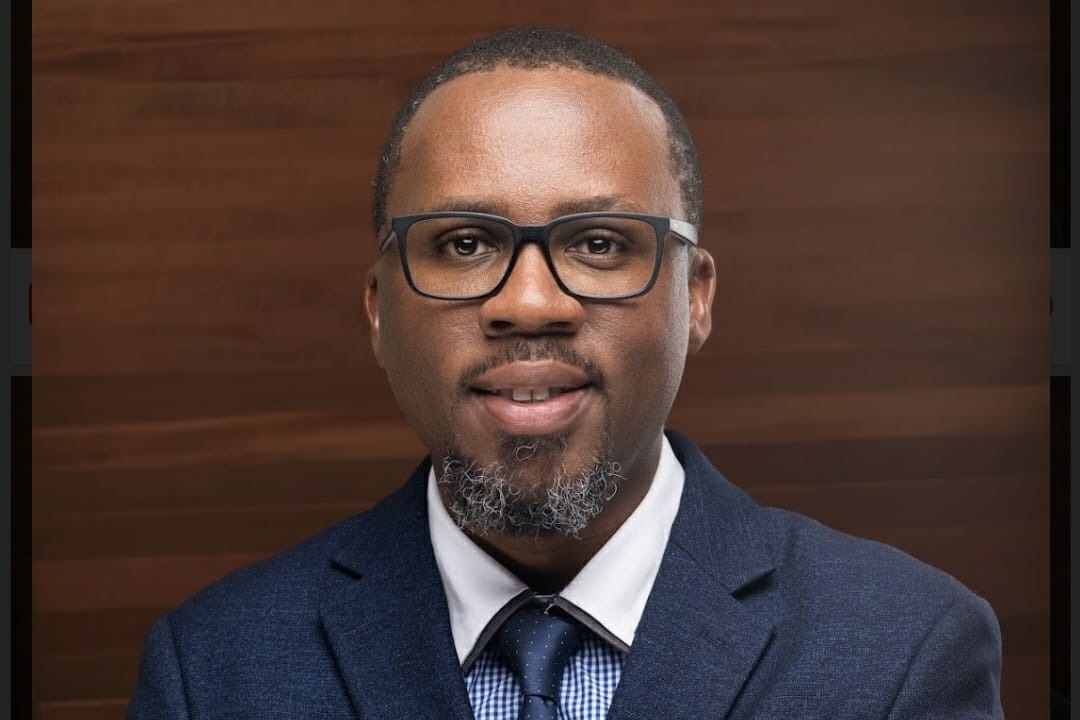
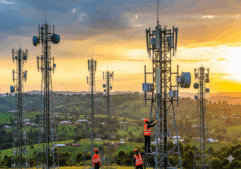 How Bharti Airtel’s Indus Towers Decision to Enter Africa is Likely to Shape the Ugandan Market and Beyond
How Bharti Airtel’s Indus Towers Decision to Enter Africa is Likely to Shape the Ugandan Market and Beyond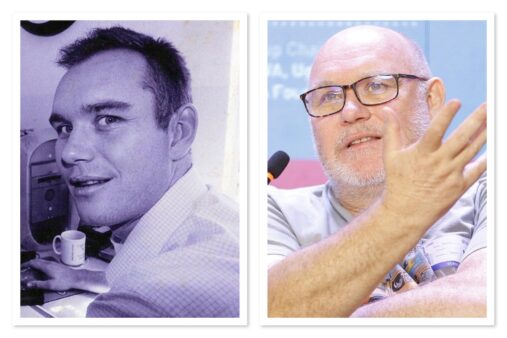
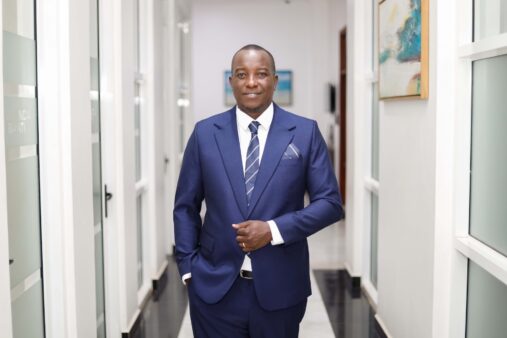
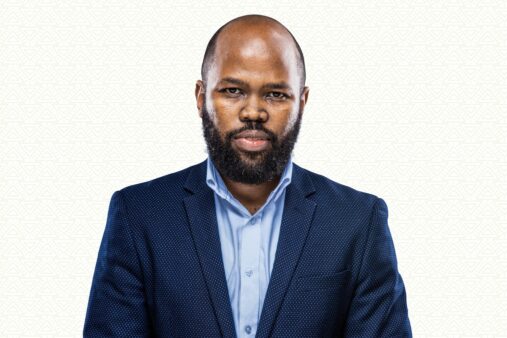
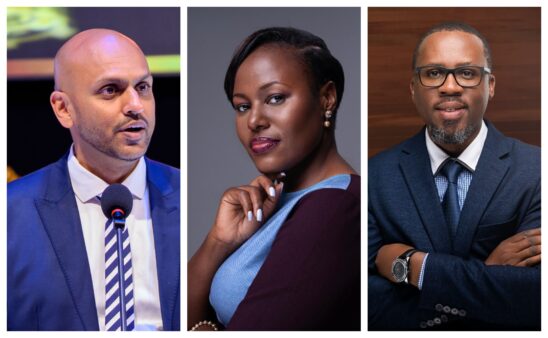
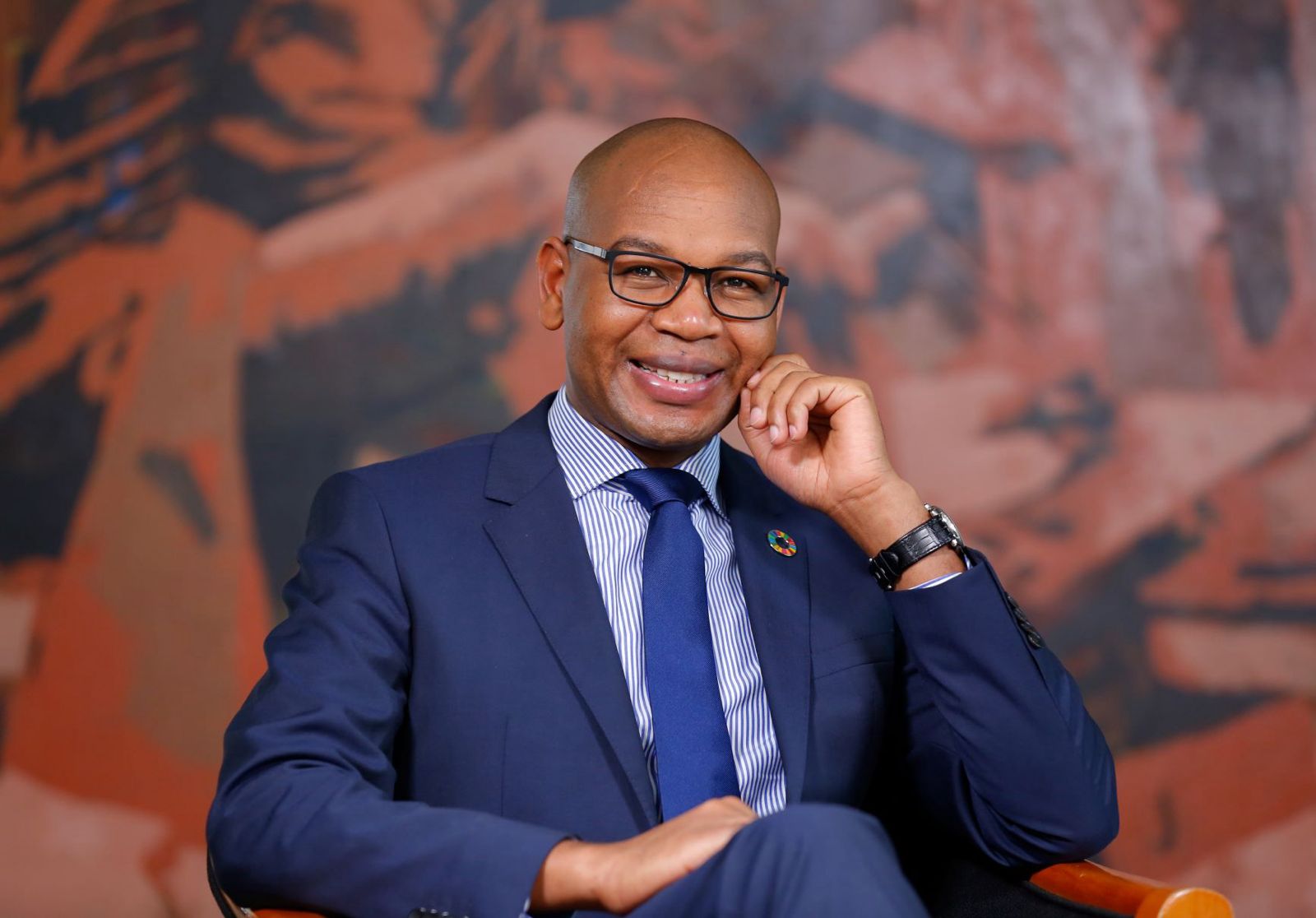
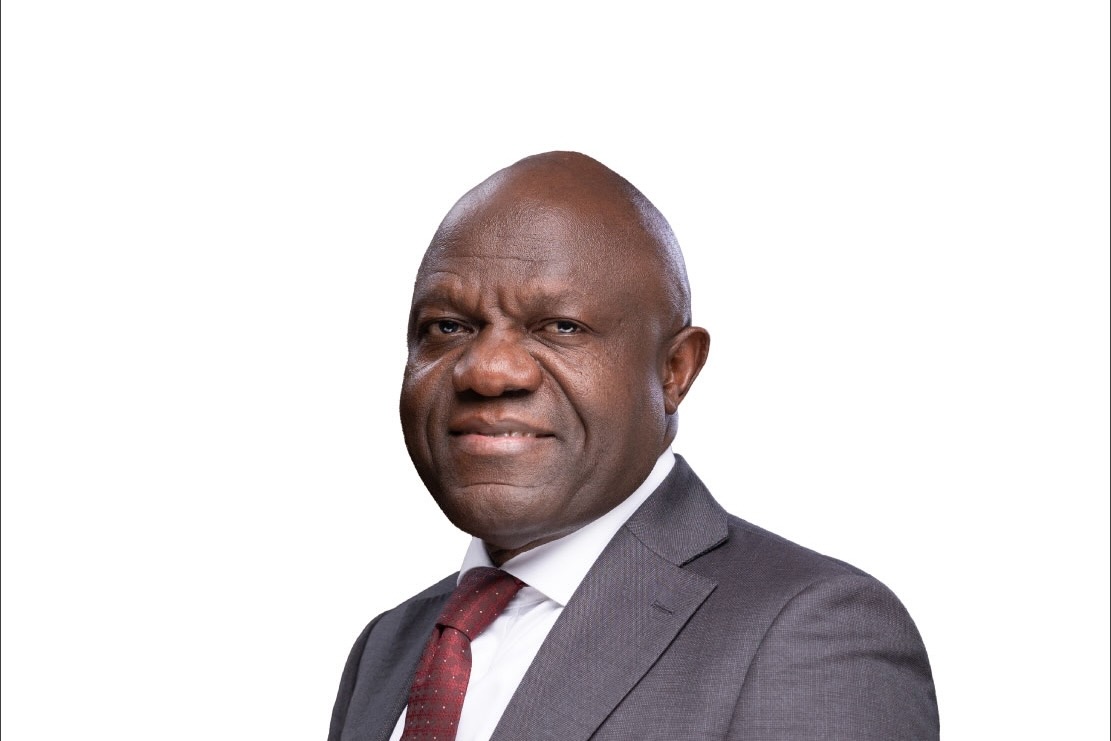
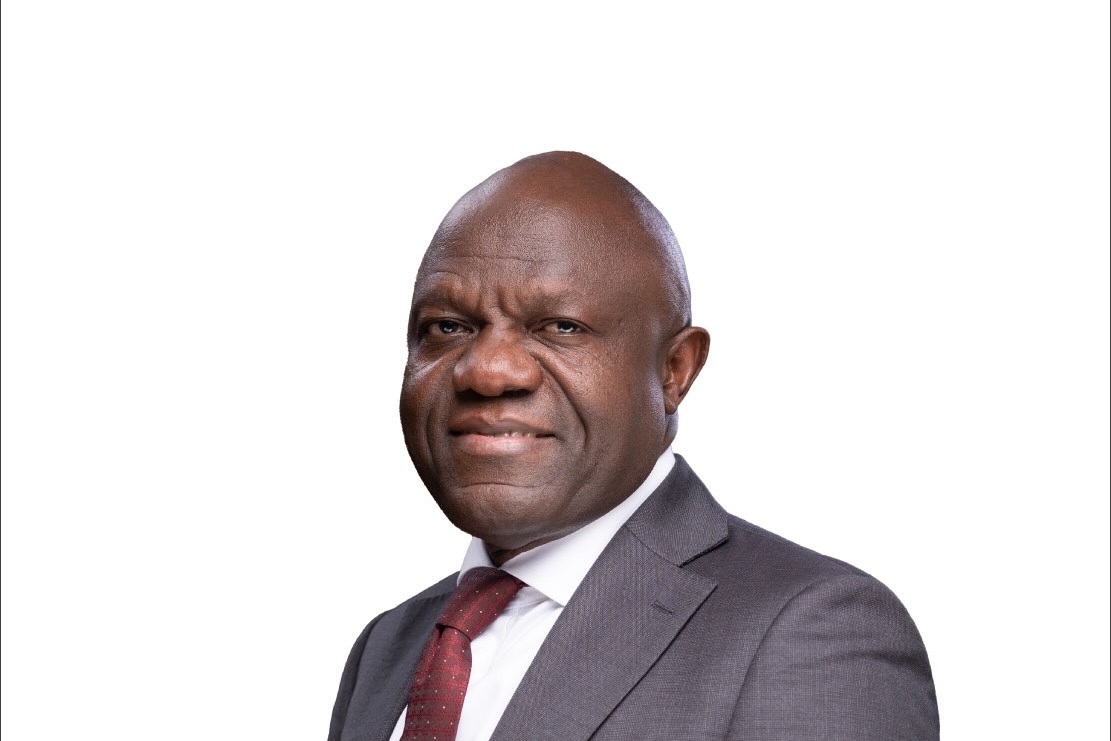

Post Comment